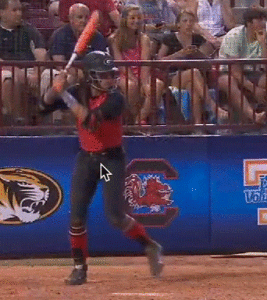More hitting today. Nothing technical, not talking mechanics here. Just a plea: Please coaches, let your hitters hit.
The showdown between the pitcher and batter is one of the great one-on-one match-ups in sports. Getting a key hit in a game, getting your first single, your first extra base hit, or just plain crushing a pitch are all up there with the top feel good moments in sports. So let’s not short-change our hitters and deny them part of the joy of the game.
Don’t short-change your hitters in practice. Get swings in! Have fun! Be judicious with live batting practices and scrimmages because time is scarce. With all of the overhead your hitters might not get as many good pitches as you had hoped.
Instead consider games like pepper, hit-the-coach, indian, bubble-ball, and over-the-line. For 10u and under a simple whiffle ball game at the end of practice can be extremely fun. Run efficient multi-station practices at the batting cage when your girls are old enough.
Don’t short-change your hitters in games. Have a continuous batting order that picks up where you left off the game before. Encourage hitters to be aggressive. Don’t always give certain batters in your lineup take and bunt signs. If you do this and/or always bat them near the end of the lineup, they won’t get the chance to improve.
While plate-discipline is obviously important, I personally don’t believe in giving take signs during at least the first half of the rec season for 10u and below.
Don’t short-change your hitters by forcing overly simple and/or un-athletic hitting mechanics on them. Educate yourself at to what high level hitters do. In this day and age you can easily look at many high level softball and baseball hitters online. I will at some point post how easy it is to download video and step through it frame-by-frame. For example, if you are currently promoting a simple 1-2 stand-still-and-push-your-arms swing, you might want to watch my first video a few times through. And then… come out to my hitting drills day for coaches!
Don’t short-change your hitters by forcing hitting styles on them that aren’t mechanically advantageous or disadvantageous. This happens all the time. Coaches force their entire team to stop moving their hands, to get rid of their strides, or start with their back elbow down. Many great hitters over the decades have employed many different styles. Learn what is style and what is good or bad mechanics.

